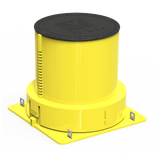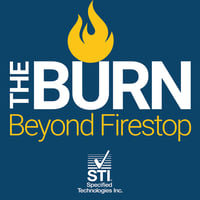EZ-Path Floor Grids Save Valuable Floor Space.
STI News
As we look ahead to a return to normalcy post-COVID, Healthcare facilities are taking the lessons learned from handling this pandemic and planning for the future. We’ve discussed previously the trend of hospitals relocating services once contained in the patient room into the neighboring corridor to conserve Personal Protective Equipment (PPE) (original post). Originally conceived as part of their pandemic response, many facilities are now making this practice a permanent part of their Standard Operating Procedures (SOP) for dealing with all infectious and immunocompromised patients.

The problem that arises is this practice was often achieved by running patient services beneath patient doors, during the onset of the pandemic although unconventional this practice was acceptable. As time has moved on and the initial shock of a global pandemic has progressed into an accepted part of our daily lives, this practice becomes less acceptable as concerns over clinical staff safety and minimizing slips, trips and falls becomes greater. The ability to manage patient services from the corridor is still highly desirable, but a new method was needed to allow for this workflow without making patient lines a trip hazard by continuing to run them underfoot beneath doors and through doorways.
Taking our patented self-sealing system originally developed for our EZ-Path® Family of Cable Pathway devices, we developed a new pass through solution for these patient services. The Clinician Patient Access Device™ (CPAD™) is a new solution designed to allow for patient monitoring and service changes at any time while keeping lines off the ground and maintaining Fire, Leakage, and Acoustical Seals and performance. With the understanding that clinical staff still require and desire the need to interact with patients, the goal of this new device was to provide a simple method of adding or removing patient services, without having to manually open or close a sealing mechanism or risk damaging or tripping over services under foot as you enter or exit the patient’s space.
The Clinician Patient Access Device has been tested to ASTM E814/UL1479 for installation in existing 30-minute rated corridor walls, making it fully compliant to NFPA 101 Requirements. Additionally, the self-sealing system used in the Clinician Patient Access Device has demonstrated the ability to restrict air flow to as minimal as 1.5 CFM even when installed to maximum capacity with tubing and services. For context a single duplex outlet allows for as much as 5.5 CFM of air leakage under the same testing criteria.
 The low-profile flush faceplate used in the Clinician Patient Access Device also makes each installation fully compliant with Chapter 3: Protruding Objects of the Americans with Disabilities Act (ADA). Unlike other occupancies, Healthcare also needs to be concerned regarding maintaining acoustical seals to protect patient’s privacy per the Health Insurance Portability & Accountability Act (HIPAA). Overhearing a neighbor’s conversation can be annoying or distracting at worst in a Commercial space, whereas in Healthcare it is a finable offence that can have serious implications for the facilities ability to operate. With this in mind, the Clinician Patient Access Device has been tested to ASTM E90 achieving an STC Rating of up to 50 based on the performance of the surrounding construction, demonstrating the device’s ability to reduce sound transmission through the barrier that it has been installed into. Ensuring both patient privacy and as peaceful of a recovery space as possible.
The low-profile flush faceplate used in the Clinician Patient Access Device also makes each installation fully compliant with Chapter 3: Protruding Objects of the Americans with Disabilities Act (ADA). Unlike other occupancies, Healthcare also needs to be concerned regarding maintaining acoustical seals to protect patient’s privacy per the Health Insurance Portability & Accountability Act (HIPAA). Overhearing a neighbor’s conversation can be annoying or distracting at worst in a Commercial space, whereas in Healthcare it is a finable offence that can have serious implications for the facilities ability to operate. With this in mind, the Clinician Patient Access Device has been tested to ASTM E90 achieving an STC Rating of up to 50 based on the performance of the surrounding construction, demonstrating the device’s ability to reduce sound transmission through the barrier that it has been installed into. Ensuring both patient privacy and as peaceful of a recovery space as possible.
We’re excited to offer this new product to our Healthcare partners. If you want to learn more about the Clinician Patient Access Device or any of our other solutions talk to your local STI Rep or our Engineering Services Team.




